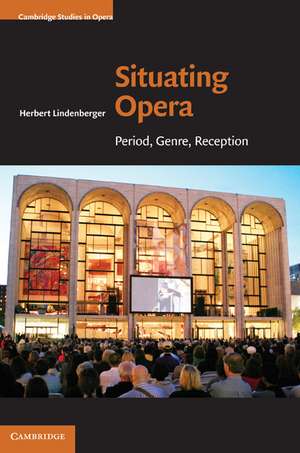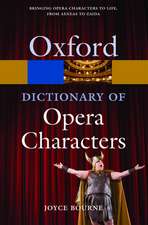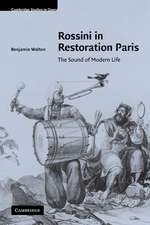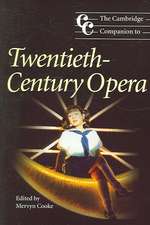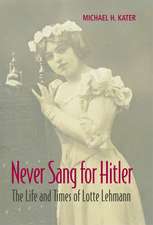Situating Opera: Period, Genre, Reception: Cambridge Studies in Opera
Autor Herbert Lindenbergeren Limba Engleză Hardback – 27 oct 2010
Din seria Cambridge Studies in Opera
- 11%
 Preț: 701.59 lei
Preț: 701.59 lei -
 Preț: 243.74 lei
Preț: 243.74 lei - 11%
 Preț: 701.94 lei
Preț: 701.94 lei - 14%
 Preț: 679.50 lei
Preț: 679.50 lei -
 Preț: 343.23 lei
Preț: 343.23 lei -
 Preț: 241.99 lei
Preț: 241.99 lei -
 Preț: 241.62 lei
Preț: 241.62 lei -
 Preț: 369.25 lei
Preț: 369.25 lei -
 Preț: 456.33 lei
Preț: 456.33 lei -
 Preț: 289.39 lei
Preț: 289.39 lei -
 Preț: 329.21 lei
Preț: 329.21 lei -
 Preț: 339.75 lei
Preț: 339.75 lei -
 Preț: 326.45 lei
Preț: 326.45 lei -
 Preț: 284.01 lei
Preț: 284.01 lei -
 Preț: 279.49 lei
Preț: 279.49 lei - 14%
 Preț: 781.54 lei
Preț: 781.54 lei -
 Preț: 341.48 lei
Preț: 341.48 lei -
 Preț: 279.88 lei
Preț: 279.88 lei -
 Preț: 333.40 lei
Preț: 333.40 lei - 11%
 Preț: 692.50 lei
Preț: 692.50 lei -
 Preț: 341.70 lei
Preț: 341.70 lei -
 Preț: 288.80 lei
Preț: 288.80 lei -
 Preț: 245.04 lei
Preț: 245.04 lei -
 Preț: 208.68 lei
Preț: 208.68 lei - 11%
 Preț: 699.86 lei
Preț: 699.86 lei - 14%
 Preț: 756.70 lei
Preț: 756.70 lei - 23%
 Preț: 593.24 lei
Preț: 593.24 lei - 23%
 Preț: 601.71 lei
Preț: 601.71 lei - 14%
 Preț: 680.53 lei
Preț: 680.53 lei - 11%
 Preț: 701.06 lei
Preț: 701.06 lei
Preț: 699.36 lei
Preț vechi: 785.80 lei
-11% Nou
Puncte Express: 1049
Preț estimativ în valută:
133.82€ • 139.45$ • 110.80£
133.82€ • 139.45$ • 110.80£
Carte tipărită la comandă
Livrare economică 03-17 aprilie
Preluare comenzi: 021 569.72.76
Specificații
ISBN-13: 9780521199896
ISBN-10: 0521199891
Pagini: 324
Dimensiuni: 157 x 229 x 23 mm
Greutate: 0.66 kg
Editura: Cambridge University Press
Colecția Cambridge University Press
Seria Cambridge Studies in Opera
Locul publicării:Cambridge, United Kingdom
ISBN-10: 0521199891
Pagini: 324
Dimensiuni: 157 x 229 x 23 mm
Greutate: 0.66 kg
Editura: Cambridge University Press
Colecția Cambridge University Press
Seria Cambridge Studies in Opera
Locul publicării:Cambridge, United Kingdom
Cuprins
Prologue. Why opera? Why (how, where) situate?; 1. Anatomy of a war horse: Il trovatore from A to Z; 2. On opera and society (assuming a relationship); 3. Opera and the novel: antithetical or complementary?; 4. Opera by other means; 5. Opera and/as lyric; 6. From separatism to unity: aesthetic theorizing from Reynolds to Wagner; 7. Toward a characterization of modernist opera; 8. Anti-theatricality in twentieth-century opera; 9. A brief consumer's history of opera; Epilogue. Why (what, how, if) opera studies?; Works cited.
Recenzii
"...very accessible and offer excellent insights into why operas of the 20th century and beyond seem to have a more limited audience than the lyrical dramatic operas of the 19th century." --Choice
Descriere
Elegantly and engagingly written, this study demonstrates how opera has communicated with its diverse audiences over time.
